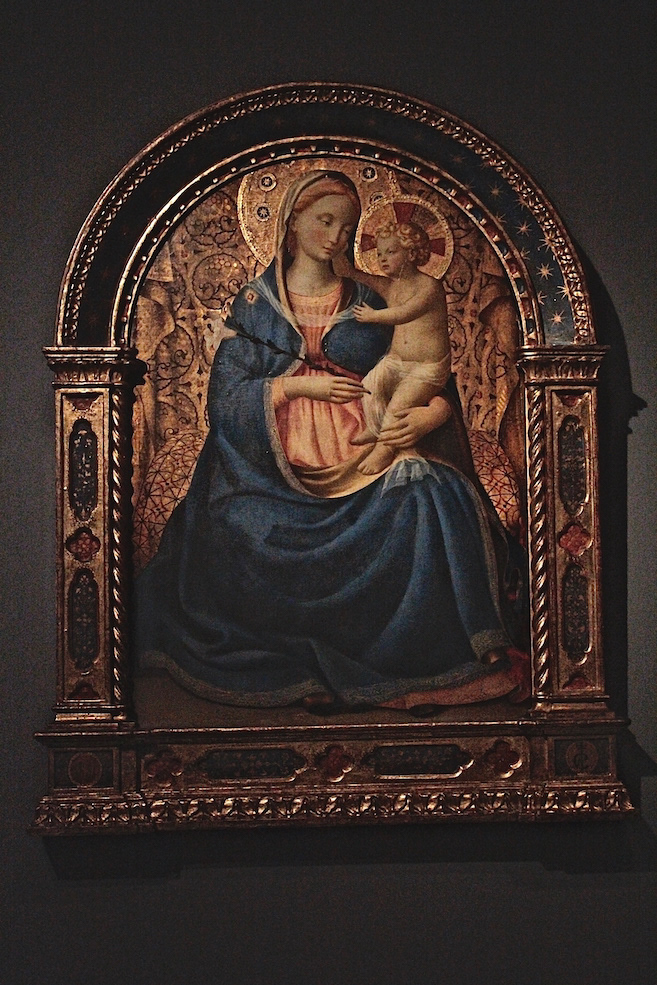


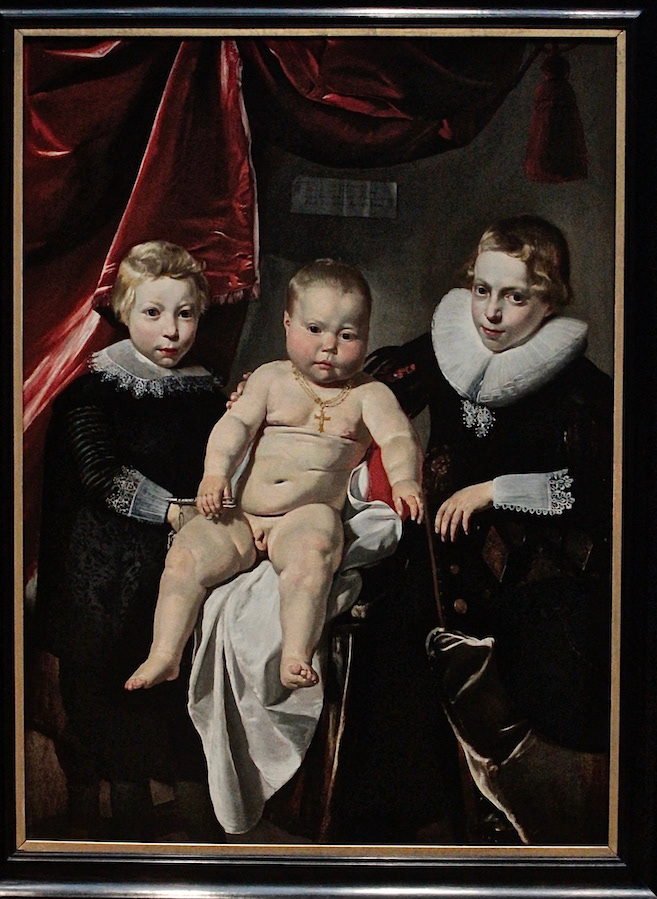
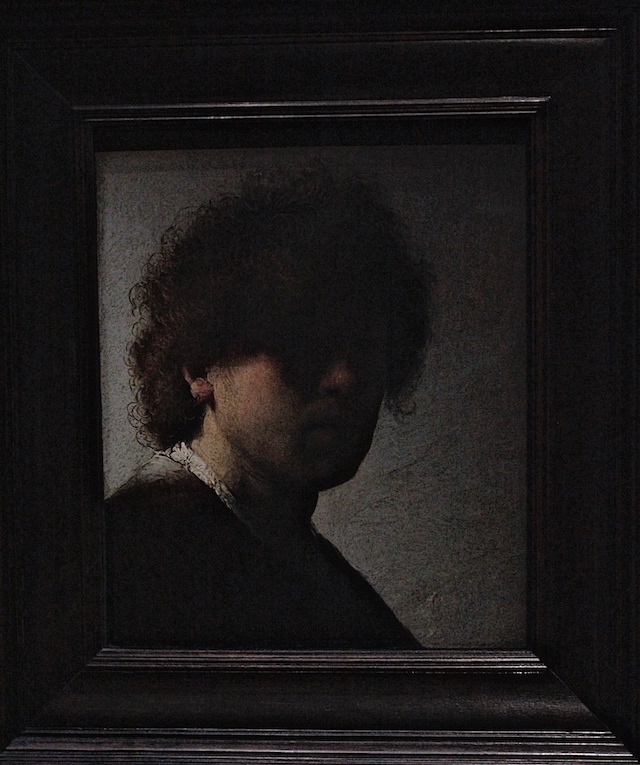

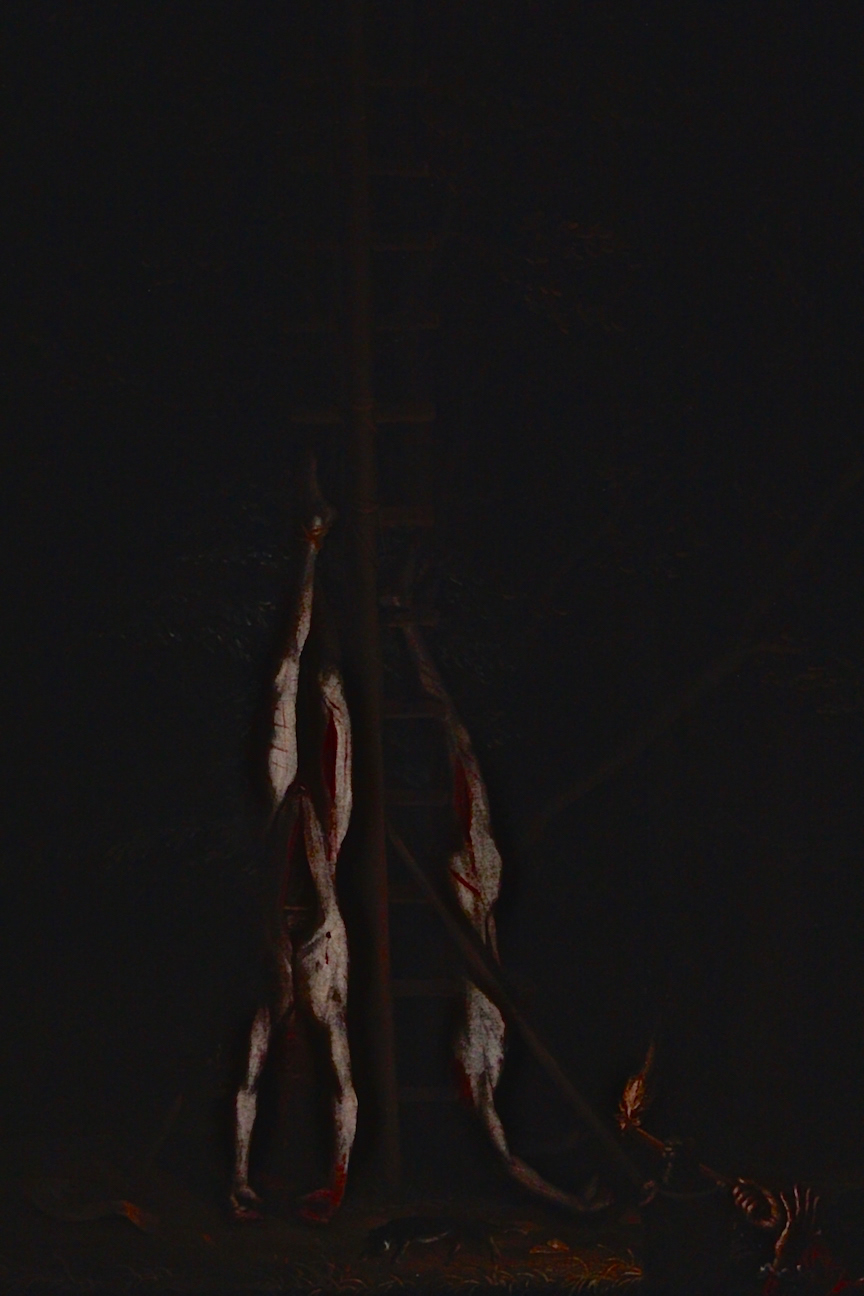
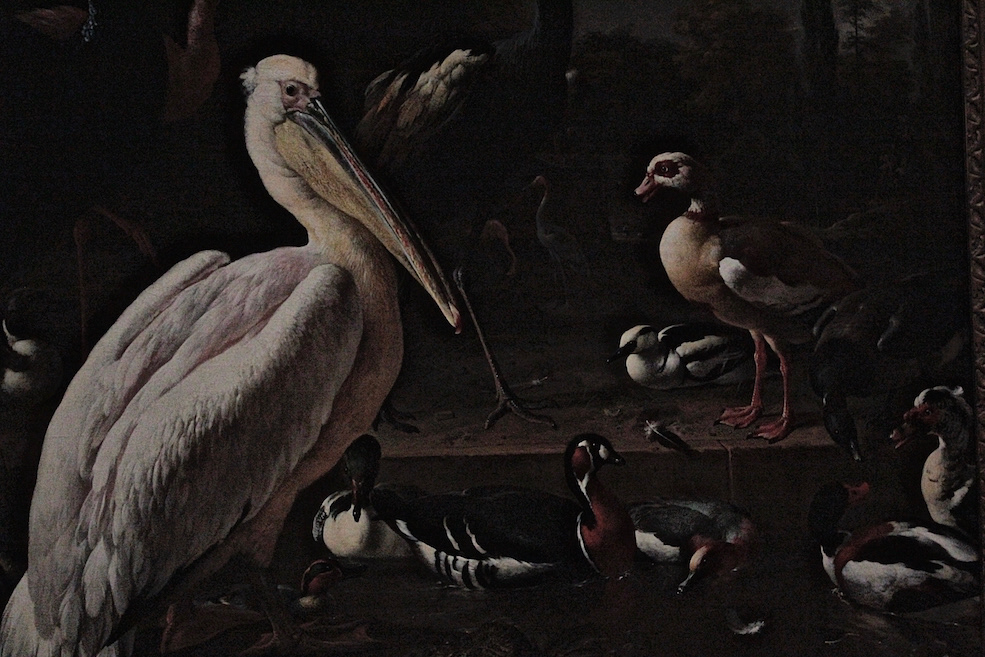
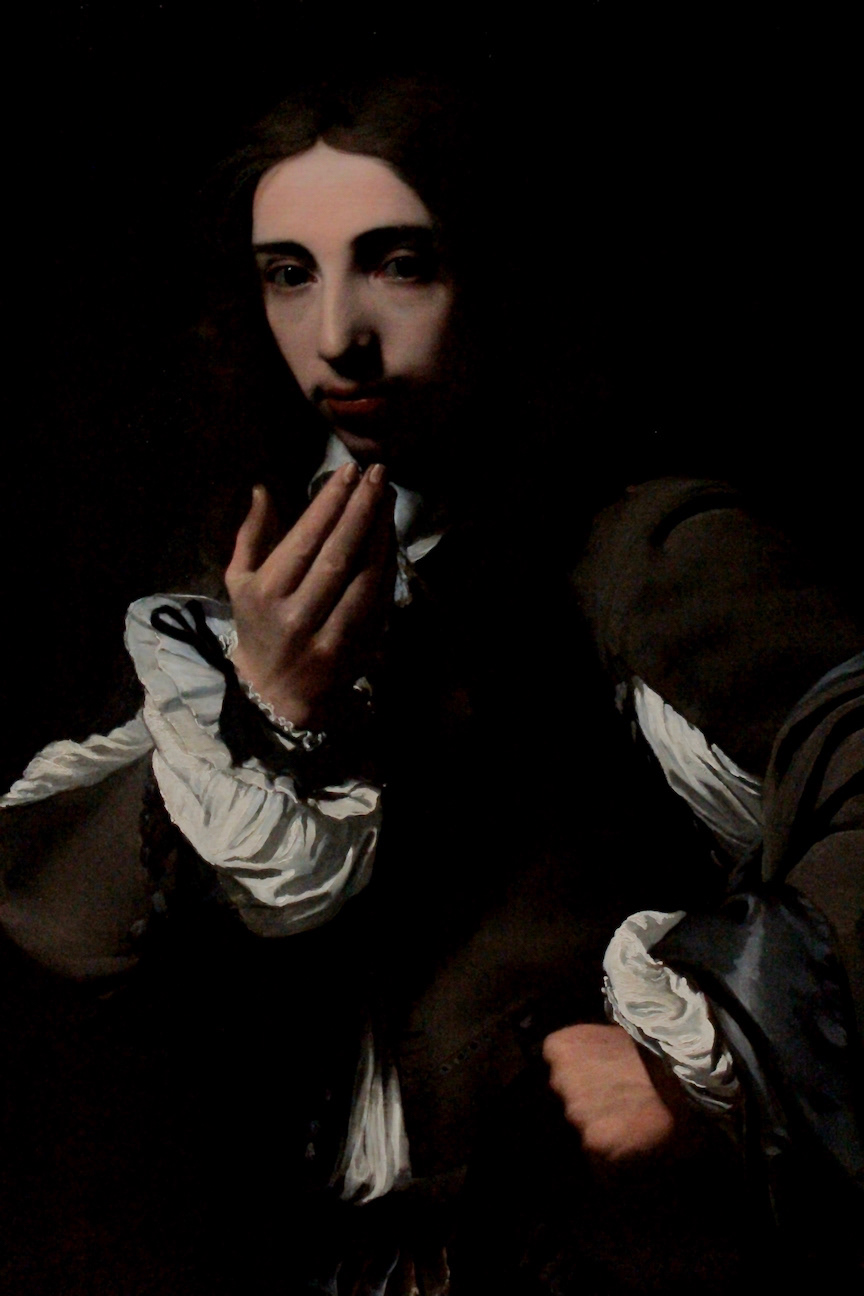

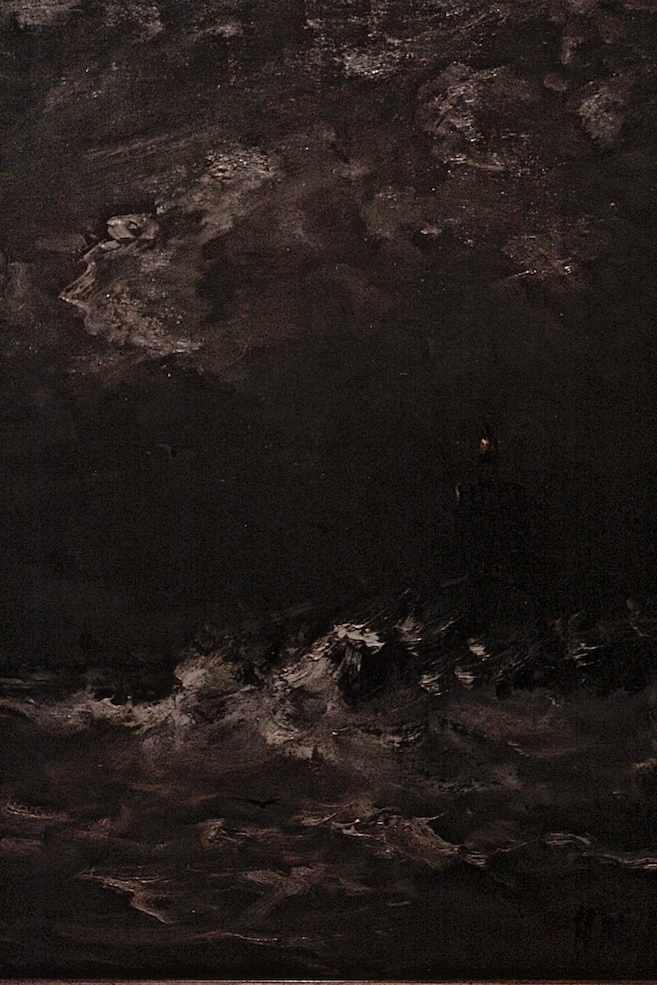



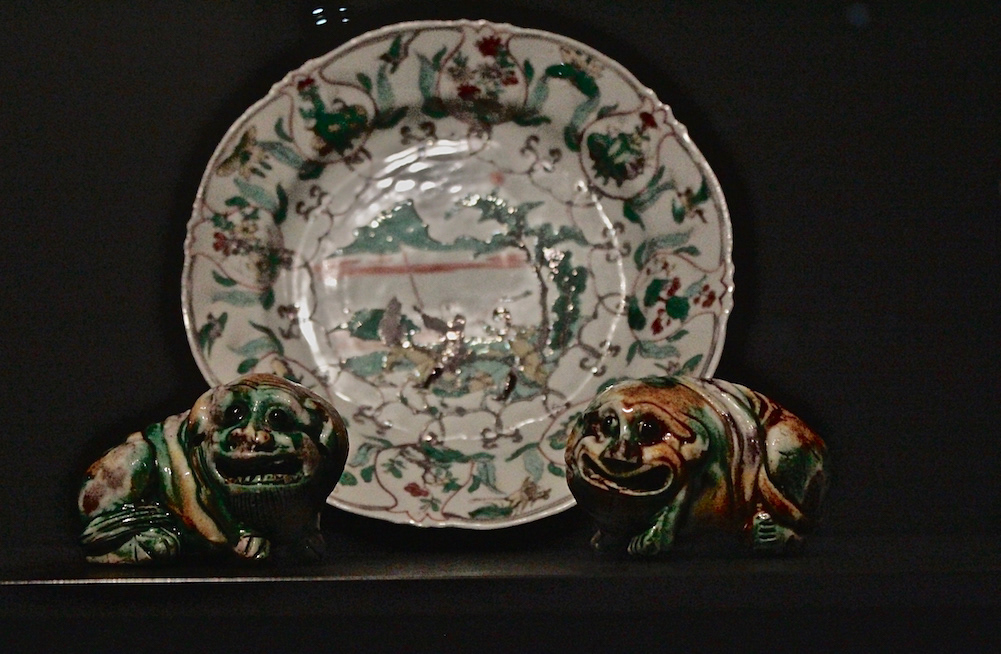
Images produced without manipulation (DSLR Camera, Canon). These are some of the pictures I took at the Rijks Museum in 2014. Walking in spaces like this is for me a kind of pilgrimage (in the sense explained by Proust/Ruskin). But I didn't have a script. I photographed only what truly affected my senses, without looking for titles and authors, which in the case of more obscure works I (re-)discovered later on, when coming back to the pictures, and some remain till now unknown or unconscious. Darkness and contrast are important (I want an effect which reveals the forces behind/throughout the image), as well as playing with the framework, which sometimes is shown & sometimes obliterated (as a parergon, in Derridean sense).
This isn't any academic, instructive exercise, quite on the contrary. The images should "speak" by themselves. The truth is in their auras, even if the aura is lost, when it is lost—don't you have an answering service? This is also an attempt to release the images from all the discursive networks that supposedly support them as officially sanctioned cultural artefacts (and if these networks were not official, my intention would be the same). The images should haunt us to the extent that we fail to name them, as dream impressions or memory failures.
About a corpse, for instance, I suggest an ironic (but irony can be infinite) sentence from Broodthaers's letter to Beuys (14 July 1968): "I smell the distant decaying of flesh." That is, if vision has to do with "memories of touch and movement" (Gombrich), it might as well have to do with scent, or for that matter, stench & disintegration.
Useful quotations:
"... dans un tableau de Rembrandt l'ombre est un avatar fatal et grandiose de la lumière: son obscurcissement. Les 'ombres' sont de couches spatiales que le faisceau lumineux de la conscience n'atteint pas... les apparitions lumineuses (et leur commotion) sont toujours menacées ou frangées avec plus ou moins de transparence ou d'épaisseur par l'impénétrable — par l'irrévélé" (André Masson, La Lumière de Rembrandt/Écrits, anthologie établie par Françoise Levaillant).
"Dans l'Italie du Quatrocento et de la Renaissance, l'anthropomorphie du démon est la règle; comme dans la France romane. Ce fait n'a échappé à aucun démonologue (sérieux) mais s'explique sans doute par l'humanisme tutélaire de ces régions, alors que les peuples nordiques semblent davantage de plain-pied avec les forces secrètes de la nature: songes de l'eau et du limon engendrant une zoomorphie triomphante... Prolifération génitale, avidité gastrique, surexcitation de tous les sens. Surgissant de toutes parts: un tohu-bohu de goinfres et de luxurieux, à la peau écaillée, velue ou pustuleuse, aux regards de boue et de sang... Moralité des Tentations: le saint parfaitement immobile, aux prises avec l'horrible, sous une pluie de coups. Ceci rejoing une recette du Taoïsme: le non-agir... Le démoniaque en Extrême-Orient. Tentations, enfers chinois, japonais, tibétains. C'est dans cette expression qu'Européens et Asiatiques se ressemblent le plus" (André Masson, Le Jardin des Délices/Écrits, anthologie établie par Françoise Levaillant).
The works photographed here include:
***Saint Vitus (Anonymous Ulm/1500, Fruitwood with Old Polychromy/58cm);
***Madonna of Humility [the Rijks' guide says that by being a monk and accordingly "exempt from the strict rules of the artist's guild in Florence," the Dominican was free to "develop a more personal style"] (Fra Angelico/1440, Tempera on Panel/74x52cm);
***The Massacre of the Innocents [might be seen as an allusion to the "slaughter" of the Dutch by the Spanish] (Cornelis Cornelisz van Haarlem/1590, Oil on Canvas/245x385cm); ***Portrait of the Three Brothers [the brothers were Catholic, as shows the crucifix; Keyser "was long considered the best portrait painter in Amsterdam until he was surpassed by Rembrandt, says the Rijks's guide] (Thomas de Keyser/1627, Oil on Panel/121x88cm); ***Self-Portrait [22 years old] (Rembrandt/1628, Oil on Panel/22x18cm);
***The Threatened Swan (Jan Asselun/1640-52, Oil on Canvas/144x171cm);
***The Corpses of the Witt Brothers ["murdered by a lynch mob in the Hague" after the Netherlands was attacked by France and England and "partisans of the House of Orange gained the upper hand," says the Rijks' guide] (attributed to Jan de Baen/1672x75, Oil on Canvas/69-56cm);
***The Floating Feather (Melchior D'Hondecoeter/1680, Oil on Canvas/159x144cm);
